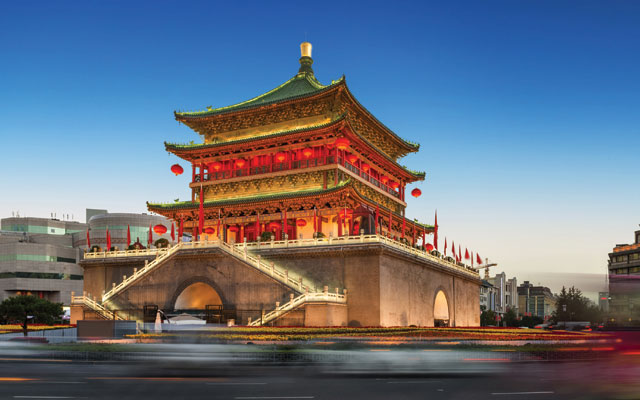The Belt and Road Initiative is spinning off benefits for China’s travel and tourism industry, whether they be high-profile events or interest in secondary destinations

The Belt and Road Initiative (BRI) is ushering in benefits for China’s travel and tourism, with industry members reporting positive spinoffs such as renewed interest in Silk Road programmes, and increasing demand for second- and third-tier cities.
Secondary destinations in China are some of the greatest beneficiaries of the BRI as they become more attractive to travellers with new air services launched and the rising popularity of China’s high-speed rail (HSR), according to inbound tour operators.

Kin Qin, deputy general manager, Century Holiday International Travel Group, commented that demand for its Silk Road programmes jumped 50 per cent to some 1,800 travellers last year, with Malaysia, Singapore and Indonesia being the top three markets.
Qin said: “We started promoting our six- to 10-day Silk Road programme to Xinjiang in Malaysia for leisure or incentives last year. We are also targeting Muslim travellers from the Middle East and Indonesia as they are interested in sightseeing on the Silk Road and providing halal food is not a problem.”
The company will continue to promote Silk Road tourism for the August to October peak season during roadshows in the Philippines, India, Indonesia and Cambodia.
Qin pointed out that there are now more flights to destinations like Xi’an, Chongqing and Lanzhou from South-east Asia, and also direct flights from Europe and the US.
“We are seeing demand for second-tier cities like Changsha among repeat visitors and also first-timers from the US. The better air access is giving travellers more options and some are choosing to avoid the air congestion that can cause delays in some top-tier cities,” Qin continued.
The number of overseas tourists to China has continuously increased since the implementation of BRI, said Julia Shi, China general manager of Diethelm Travel, adding that it has undoubtedly become an important force in leading the development of China’s inbound tourism and benefitting places like Yunnan, Guangxi, Guangdong and Xinjiang.
Shi said: “Yunnan is China’s gateway for South Asia, Guangxi for South-east Asia and Xinjiang for Central Asia.”
With stable fares plus fast and regular connections, the HSR network is also making inbound programmes more attractive and reasonably priced, said Shi. About 80 per cent of travellers prefer this mode of transport, she explained.
“Flights can easily be affected by external factors such as weather and can cause delays or cancellations. There is potential for HSR to overtake domestic air travel among international visitors in the coming years,” she remarked.
On the business events front, Ricky Yang, deputy general manager, Easy Tour China Travel, added Nanning, which is at the crossroads of BRI, and Guangxi are attracting a lot of exhibitors from South-east Asia like Malaysia, Singapore, the Philippines and Vietnam.
“Air access from Thailand, Malaysia and Cambodia… has improved. At the same time, the rapid development of China’s HSR network has resulted in more Chinese airlines shifting their focus on expanding their international services from second-tier cities like Chengdu, Xi’an, Chongqing, Kunming, Xiamen and Wuhan to South-east Asia and Europe.
“BRI has definitely increased opportunities for tourism and expanded inbound options for repeat visitors who have visited Beijing, Shanghai and Hong Kong, and people now are also curious about BRI and what China is doing,” Yang said.



















